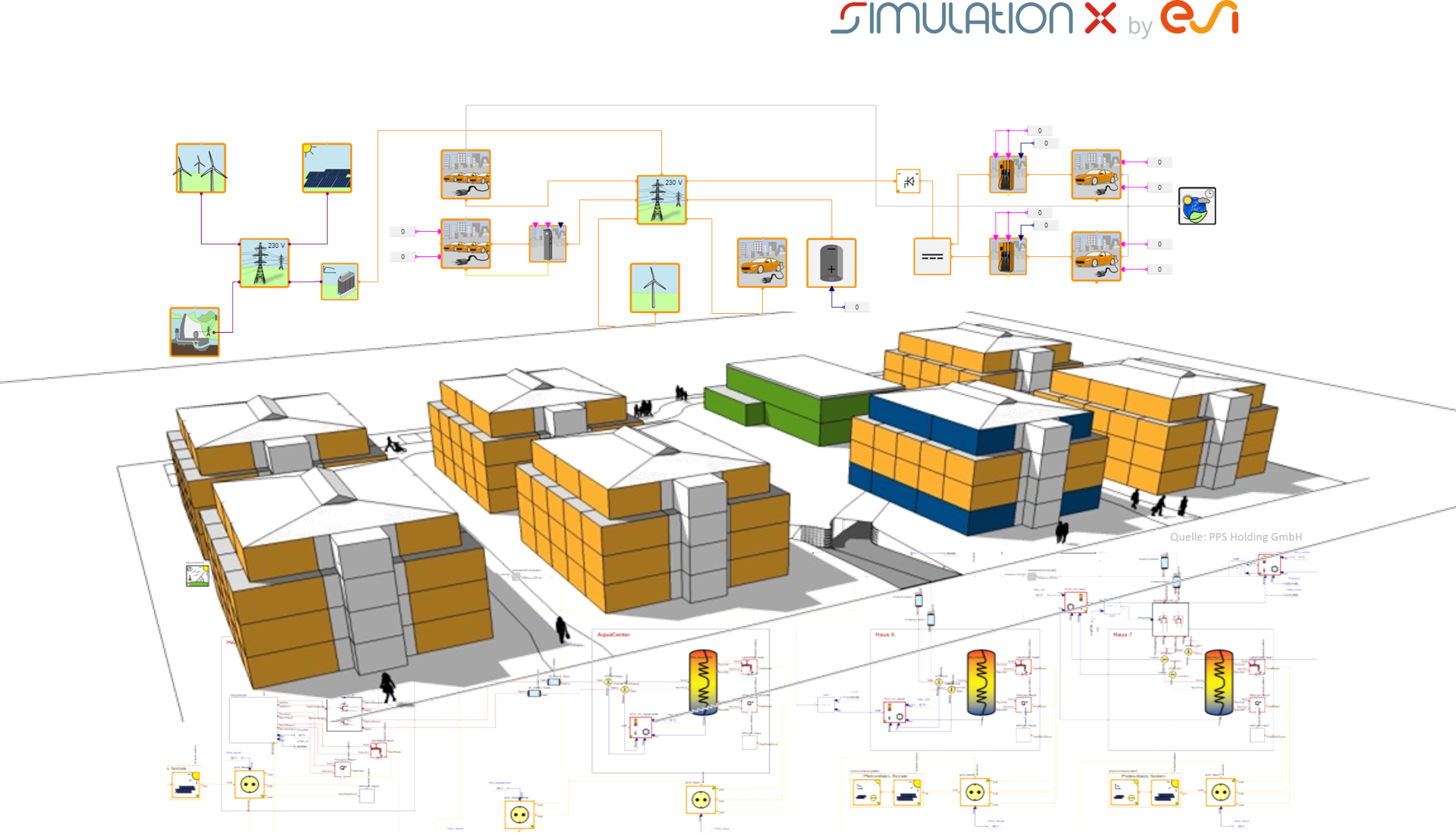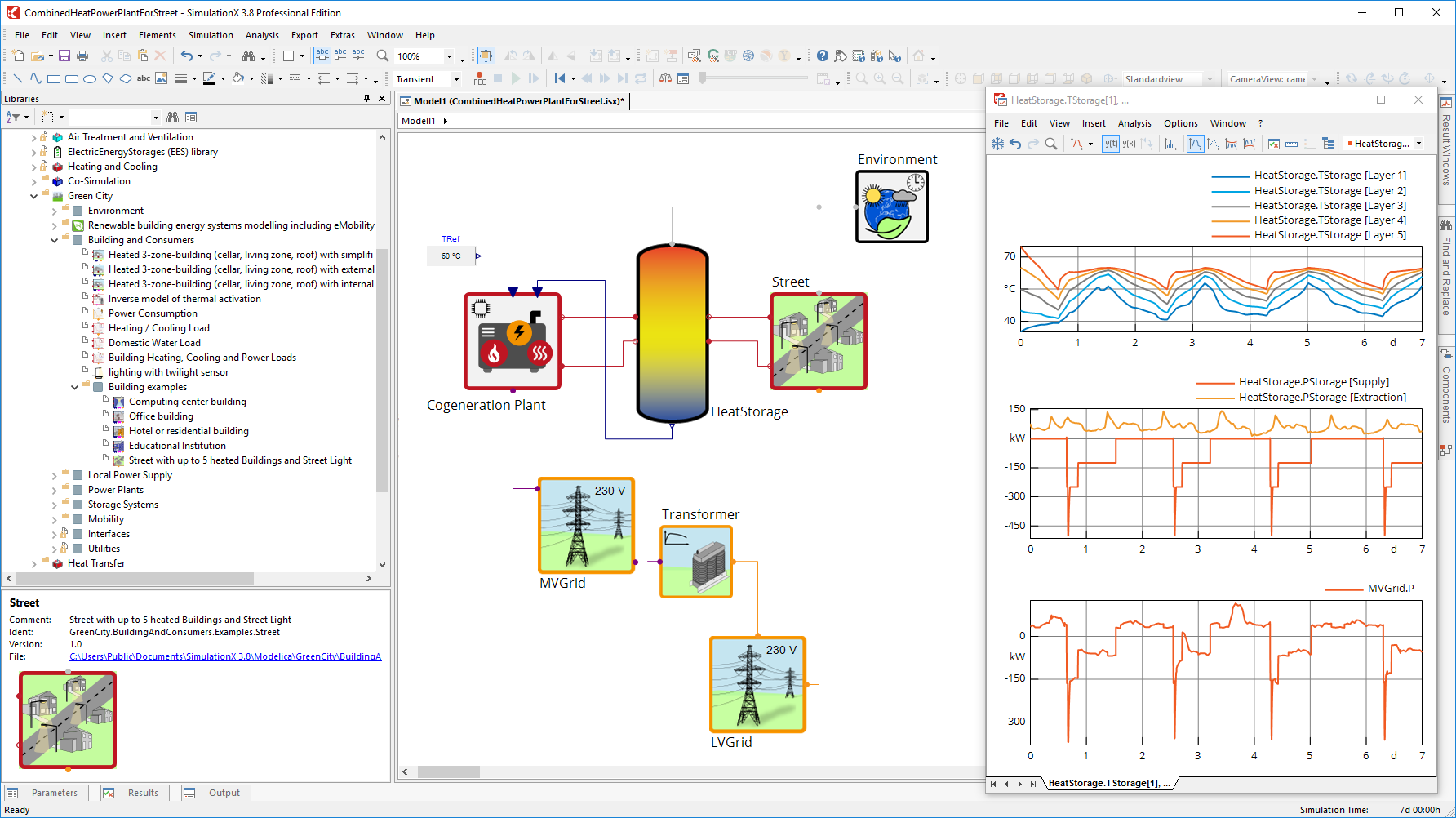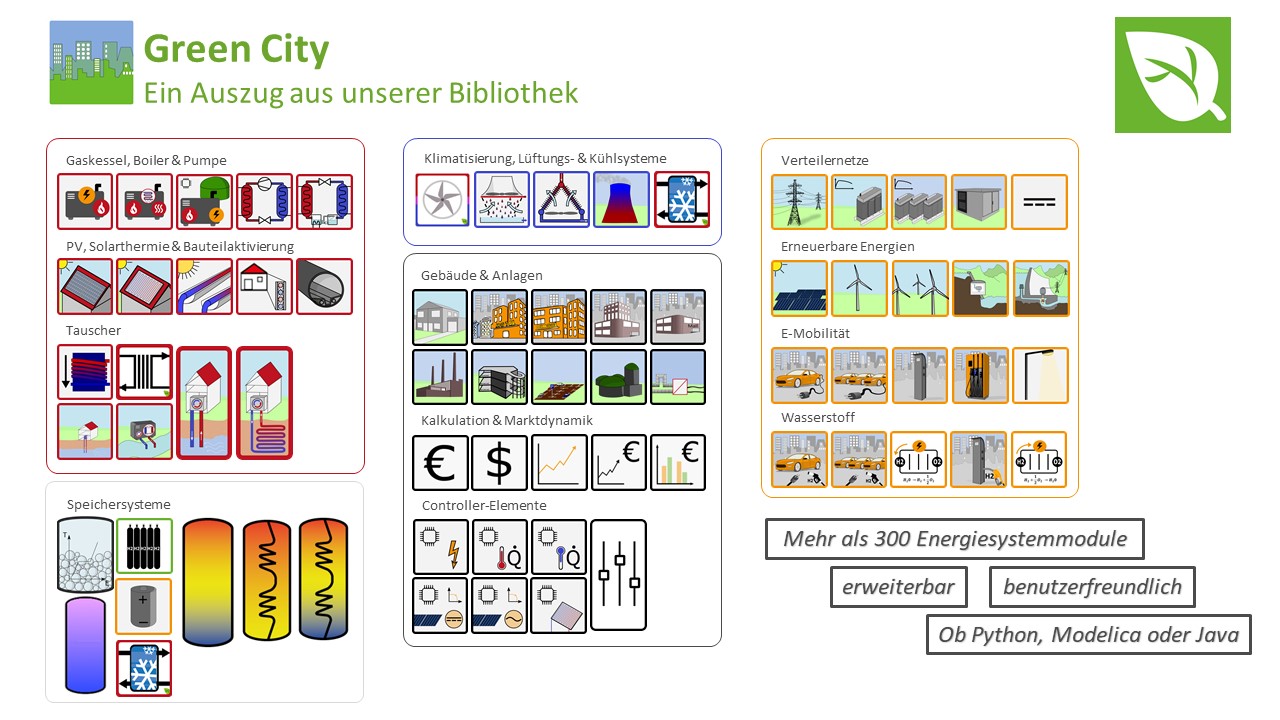The planning, optimization or evaluation of neighborhood and building energy systems, as well as of the energy systems of buildings, requires exact values and calculations. The Green City Simulation Library for SimulationX is a handy planning tool. It helps you to quickly and precisely arrive at reliable solutions and exact results. The model library forms a multitude of components. In addition to the components of the most modern energy supply systems, the Green City Library includes all thermal components, electrical components, and building and system components. Furthermore, our specially created simulation environment maps many different storage models and also allows the simulation and integration of electric mobility, control & usage behavior and enables individual model development. These contents are an integral part of Green City for Simulation X. For research and pilot projects, Green City Simulation Library can also be used to generate own models and integrate them into systems.
Simple and precise with Green City ...
- Guarantee security of supply
- Use regenerative potentials
- Integrate energy storage units
- Optimal control of plants
- Planning and integrating charging infrastructures and fleets
- Optimizing the cooling supply of data centers
- Comply with passive house standards
- Exploiting funding opportunities
- Observe building regulations
Functions of the Green City Library
- Planning, optimization, evaluation & modeling of energy systems, including all components
- Integration of e-mobility & charging infrastructure and integration of
- Energy storage units & user behavior Comparison of model parameters by means of measured values & statistics with import/export of relevant measured data
- Comparison of energy demand and consumption as well as operating and investment costs
- SiL & HiL test runs & individual model development and
System Integration - Connect your own controller applications with the open standard Modelica ® interfaces of our Green City components
Our Green City Simulation Library is not only characterized by the variety of possible applications and different components, but also stands out due to its easy handling and operation. It is precisely these characteristics that give our library an incomparable clarity and depth of detail. In addition, the simulation library can be expanded as needed and even allows the development and integration of individual models. Thus, every imaginable energetic system can be simulated and calculated. Benefit from regular updates, training and funding opportunities from Green City.
Contents of the Green City Library
- Thermal component
- Exchanger
- cooling & heating elements
- Solar thermal & PV
- Building & plant components
- Various buildings
- Controller
- Calculation Instruments
- Electrical Components
- Renewable Energies
- Networks
- E-mobility & hydrogen
- Storage models
Sample models included in Green City
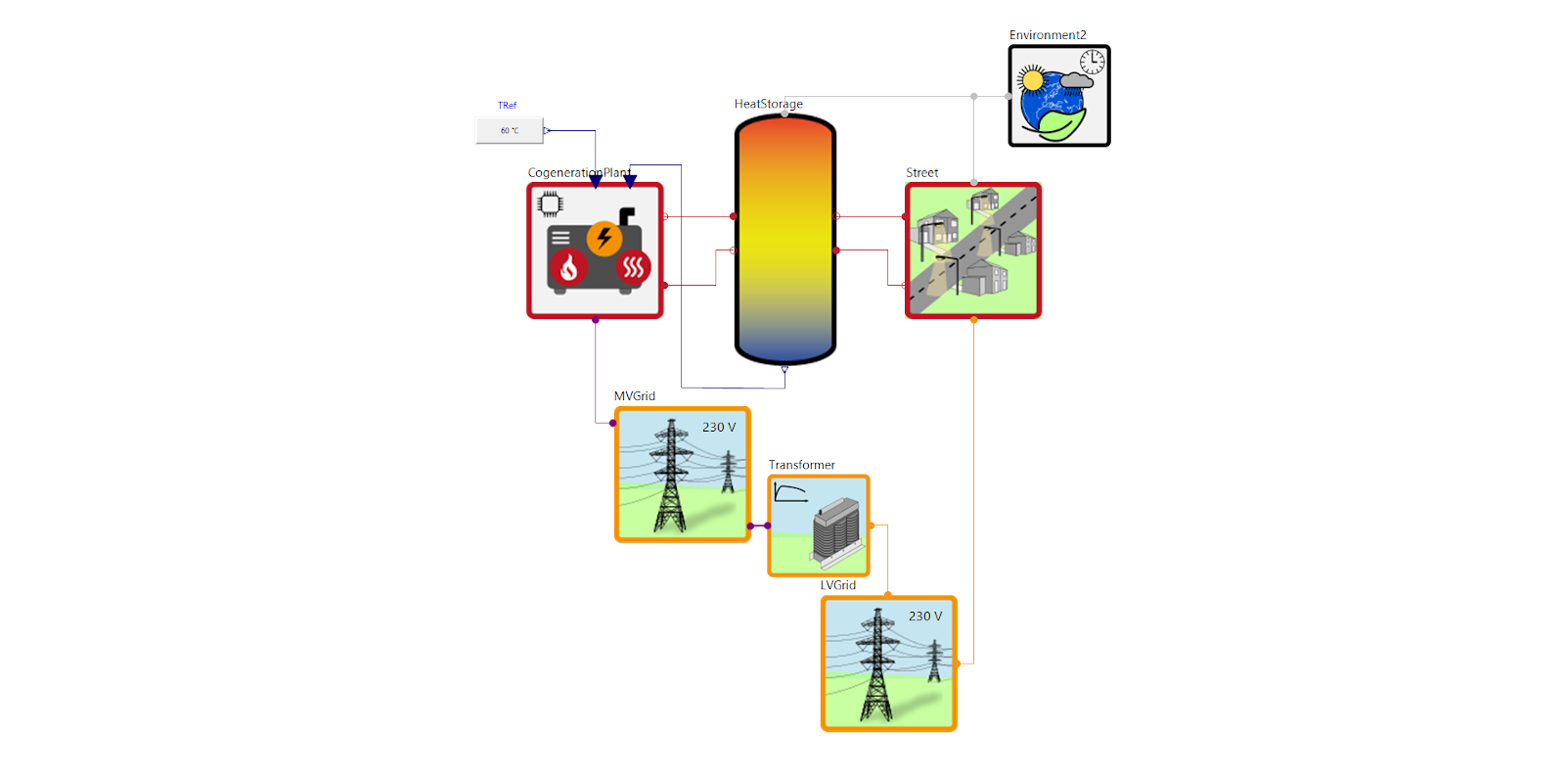
Model Example I: Combined heat power plant for street
The model shows a simplified heat, warm water and electrical energy consumer which is supplied by a combined heat and power plant. The consumption is defined via time-tables. A heat storage tank serves as a buffer against sudden changes in heating load. It can be observed in the simulation, that the power plant cannot continuously meet the electrical load without electrical energy storage.
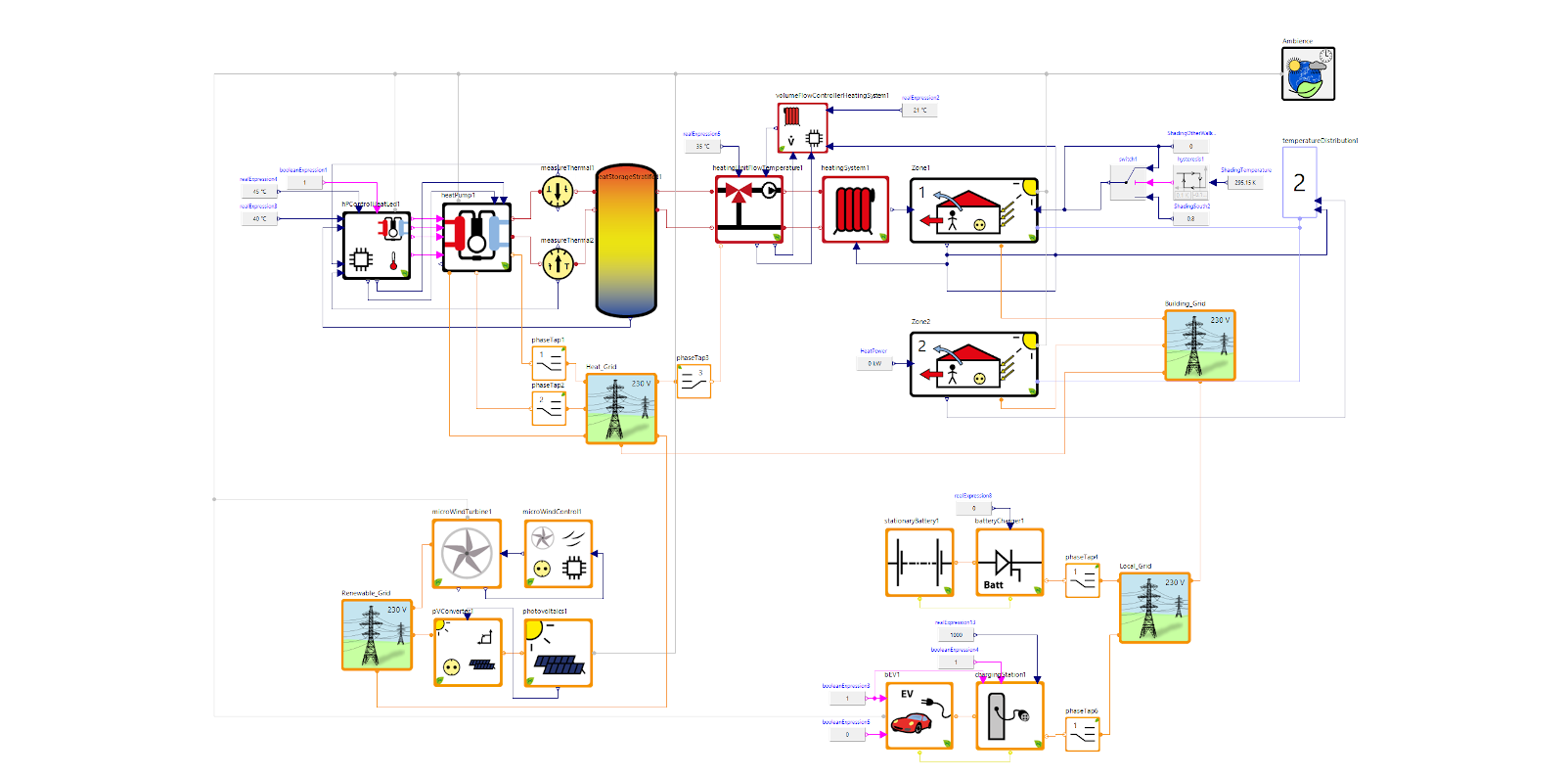
Model Example II: Multi zone building with electric vehicle
Model of a building with 2 thermal zones and an electric vehicle including its own charging station and battery. Electrical power is provided by a photovoltaic system and a small wind power plant. An air/water heat pump provides the building with heat.
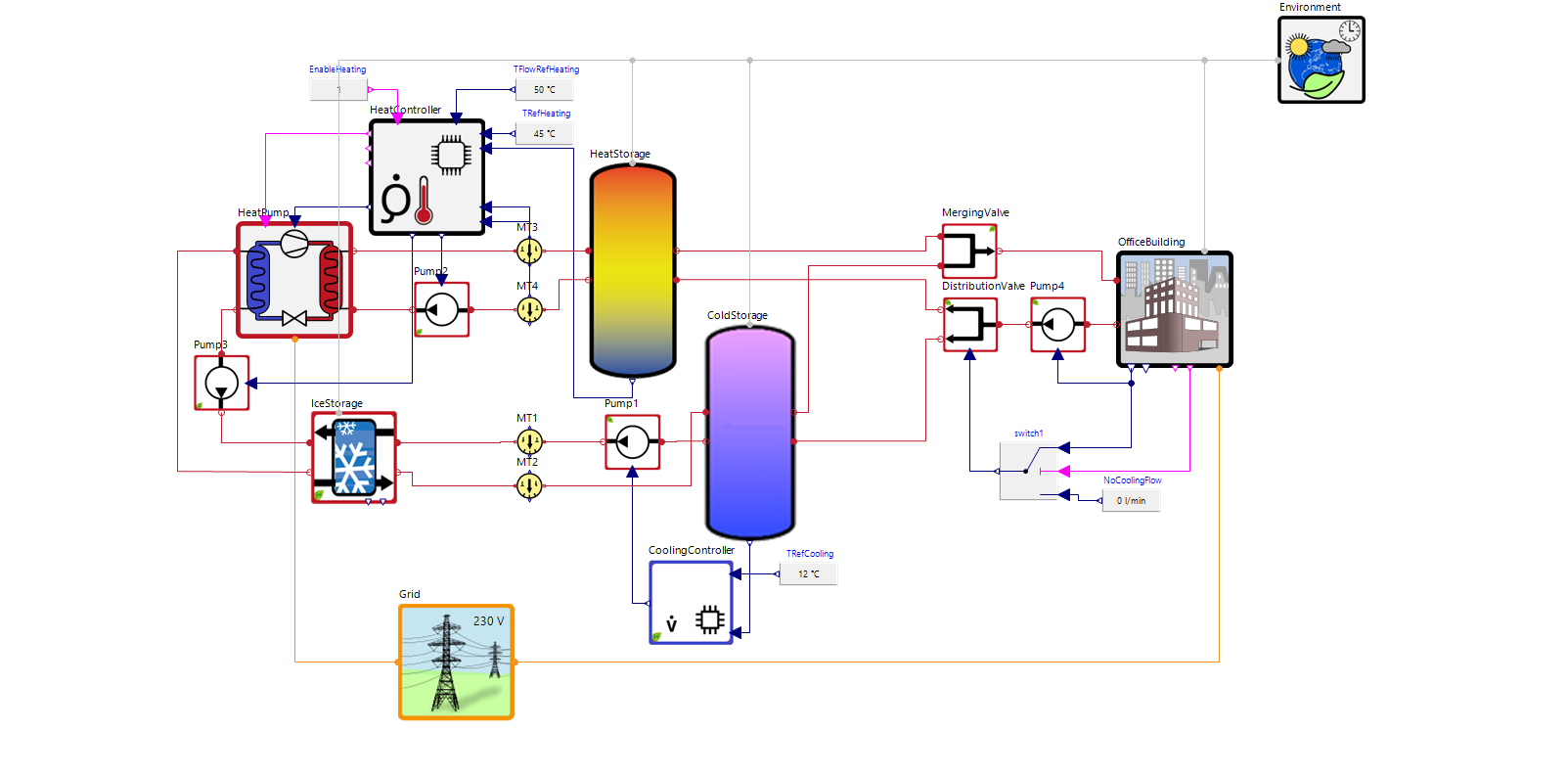
Model Example III: Office heating cooling ice storage
The model contains an office building with a heating and a cooling load. A heat pump produces heat, which is stored in the heat storage tank, as well as cold which is used for the building cooling load. The cooling energy is stored in an ice storage for seasonal storage and in a cold storage tank for short-term use.
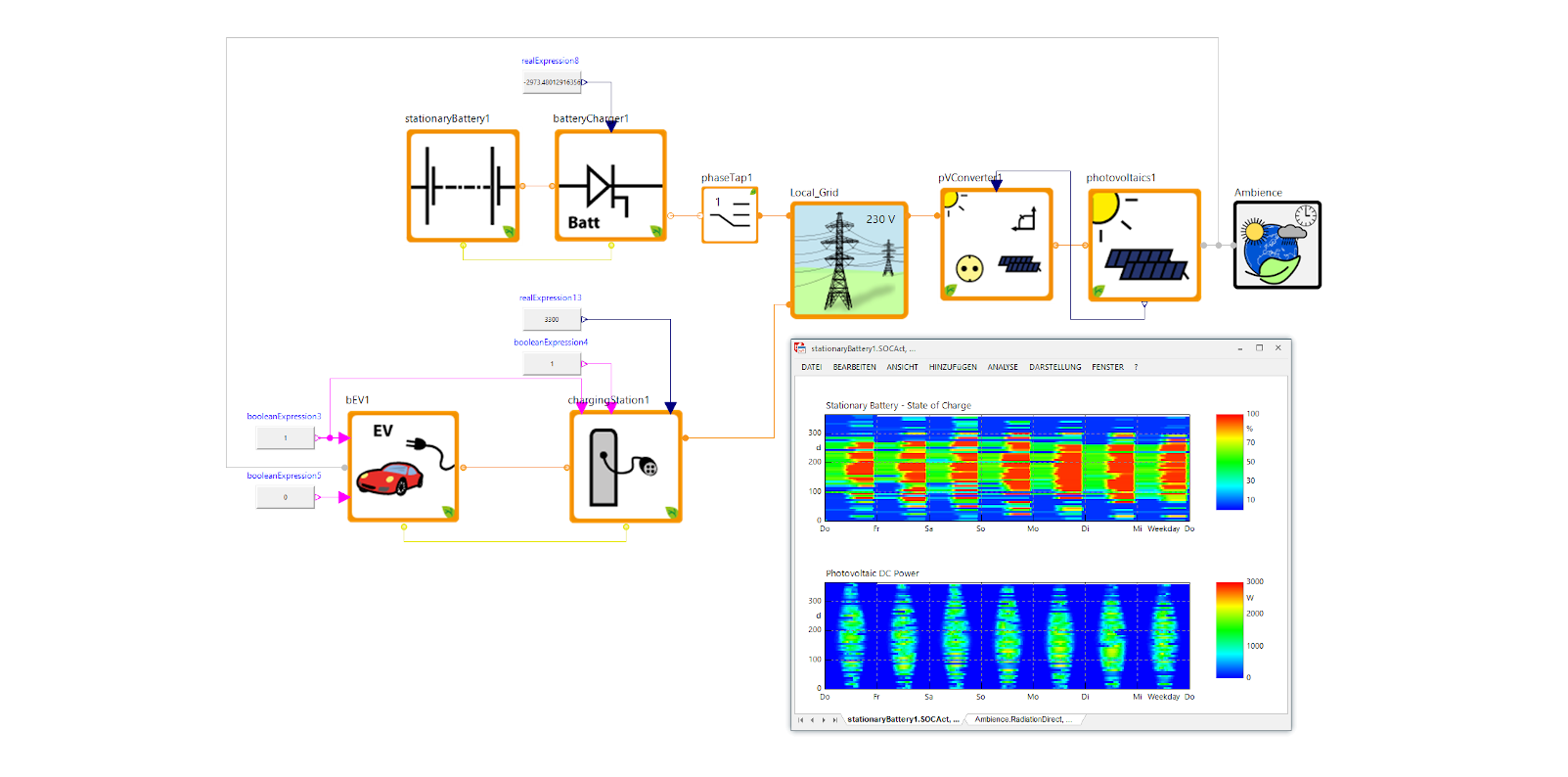
Model Example IV: Renewable charging station
Model of a charging station for electric vehicles. The system configuration including the integrated electrical energy storage makes it to a great extent possible to self-sufficiently charge the vehicle using renewably generated electrical energy from a photovoltaic system.

